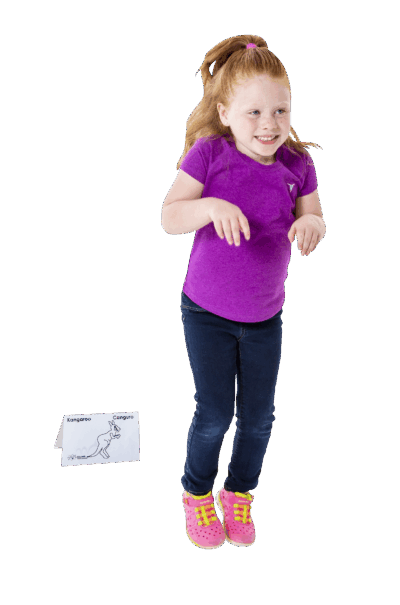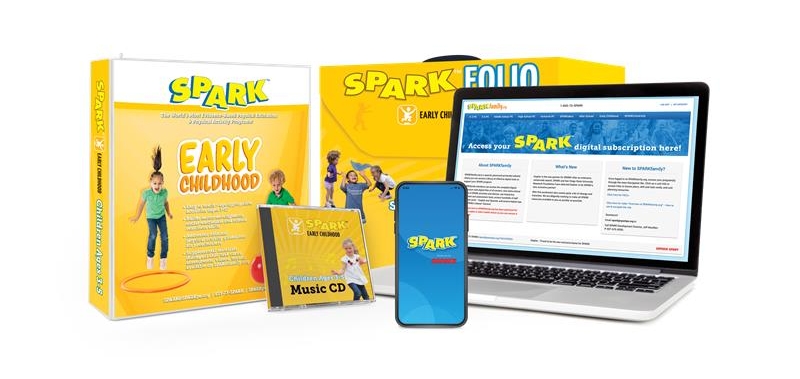In today’s early childhood classrooms, station-based learning has become an essential part of developmentally appropriate practice. Stations give young children the opportunity to explore, create, move, and collaborate — all in a structured, engaging environment. When it comes to physical activity and motor development, the SPARK Early Childhood curriculum offers a powerful, research-based solution that aligns beautifully with the goals of station-based learning in preschools.
Below are the key benefits of using SPARK in a station format and why it belongs in every early learning setting.
Developmentally Appropriate and Play-Based
The SPARK Early Childhood curriculum is grounded in research on how young children learn best, through play, exploration, and movement. Each activity is carefully designed to match the developmental abilities of children ages 3–5, supporting physical, cognitive, and social-emotional growth.
When used in station formats, SPARK activities allow children to move through small, focused areas where they can practice specific skills like balancing, throwing, or creative movement. This variety keeps children engaged and helps ensure they receive a well-rounded experience. The curriculum provides guidance on how to adapt tasks to different skill levels, making each station inclusive and developmentally appropriate.
Supports Physical Literacy and Motor Skill Development
SPARK stations are more than just busy-time activities, they are purposeful opportunities to build foundational movement skills. Whether it’s hopping on one foot, striking a balloon with a paddle, or crawling through tunnels, SPARK lessons emphasize physical literacy: the confidence and competence to move in a variety of ways.
Station setups help reinforce these skills through repetition and exploration. With multiple children rotating through each station, there’s ample opportunity to practice, observe peers, and receive feedback. This repetition in a low-pressure environment helps build both ability and confidence, two key ingredients in lifelong physical activity.
Download a FREE Station Card Sample!
Enhances Classroom Management and Flow
One of the standout features of SPARK is how well it integrates with the natural rhythm of the preschool day. SPARK’s station-based activities are easy to set up and rotate, supporting smoother transitions and better flow in the classroom. Teachers can break children into small groups, reducing crowding and improving engagement.
Each SPARK activity comes with clear instructions, visuals, and management tips that help teachers stay organized and proactive. Stations can be indoor or outdoor, making it easy to adjust for space and weather. Plus, SPARK offers guidance on how to use music and visual cues to help children transition between stations calmly and efficiently, a huge win for behavior and classroom management.
Promotes Social Interaction and Inclusion
In preschool, physical activity isn’t just about movement, it’s a vital platform for social-emotional development. The SPARK curriculum encourages cooperation, turn-taking, and positive peer interaction at every station.
SPARK also emphasizes inclusion, with adaptations for children of all abilities. Teachers can modify equipment, simplify tasks, or pair children strategically to ensure every learner can participate meaningfully. In a station-based setting, this means children of all developmental levels can move through the same circuit and experience success in their own way.
Easy to Implement
The SPARK curriculum comes with detailed lesson plans, equipment lists, assessment tools, and visual aids that make planning and implementation easy, even for educators without a strong physical education background. The flexible nature of the activities makes them ideal for weekly rotation or integration into daily learning centers.
Using the SPARK Early Childhood curriculum for stations in preschool settings is a smart, effective way to promote whole-child development. It supports physical literacy, enhances social-emotional skills, and helps teachers manage a more active, engaging classroom. With its strong research foundation and user-friendly design, SPARK makes it easy for early childhood educators to bring quality physical activity to life — one station at a time.








Leave A Comment